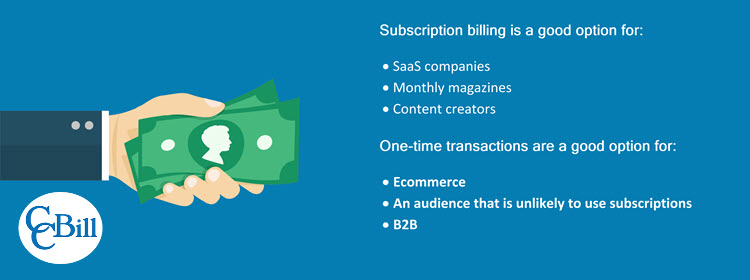To attract and retain customers, merchants need to provide convenient billing models for their goods or services. Two increasingly popular billing models are pay-as-you-go and monthly subscription billing.
Let’s look at the characteristics of each billing model, compare them, and help you determine which is more suitable for your business.
Pay-as-You-Go vs. Monthly Subscription: Differences
The pay-as-you-go billing model lets customers make a one-time payment for immediate access to a product or service. An example of a pay-as-you-go model is a buyer paying for a prepaid phone credit with a set number of minutes.
A monthly subscription is a billing model where customers are automatically charged a flat monthly rate in exchange for continued access to products or services during a billing period. An example of a monthly subscription model is when a customer subscribes to a snack delivery service. They are charged monthly, and they receive a previously determined number of snacks each month.
Pay-as-You-Go Billing Model
A pay-as-you-go (PAYG) or usage-based billing model allows customers to make a one-time purchase for a product or service without subscribing to a regular monthly plan.
The PAYG model works in two ways:
- The customer makes a one-time payment in advance for a set number of products or services.
- The customer uses certain services during a billing cycle (usually one month) and pays for them at the end of the billing cycle.
The amount paid in the PAYG model depends on how much the customer wants to spend. A transaction is calculated based on a fixed product price or amount of service usage.
Pros and Cons of Pay-as-You-Go Billing
Consider the following pros and cons of PAYG billing for both the merchant and the customer.
Pros
- Customers have more spending and usage control
- Less waste (customers purchase what they want to use)
- Provides insight into which products/services are popular
- The PAYG model provides a low barrier to entry for the customer because they don’t need to commit to future payments and products or services they may not want.
- Unpredictable revenue for the merchant
- Merchants need to put more effort into encouraging repeat purchases
- Inconvenient for frequent buyers
Though the PAYG model provides convenient billing for the customer, it presents a challenge to the merchant to retain the customer.
Examples of Pay-as-You-Go Billing Model
Some examples of pay-as-you-go businesses are:
The pay-as-you-go billing model is primarily service-based but the technology is quickly evolving to include more industries.
Monthly Subscription Billing Model
A monthly subscription billing model allows consumers to pay a flat monthly rate for continual access to products or services.
The recurring monthly payments are fixed, and the subscription is renewed automatically until the service is cancelled. Some companies offer a tiered pricing model for subscribers, and lower per-month costs for longer subscriptions.
Pros and Cons of Monthly Subscription Billing
Consider the following pros and cons of a monthly subscription for both the merchant and the customer.
Pros
- Consistent, predictable recurring revenue for the merchant
- Reliable, continual service for the consumer
- Automatic, hassle-free billing
Subscribers enable merchants to plan future products and services based on the consistent income from monthly subscriptions.
Cons
The merchant needs to innovate and fulfill the subscribers’ expectations so as not to lose them to competitors.
Examples of Monthly Subscription Billing Model
- Software as a service (SaaS)
- News and magazine outlets
- Entertainment companies
- Online platforms
- Subscription box companies
The monthly subscription model has naturally evolved with the advance of digital technologies and as products and services move online. Stats show this trend is here to stay.
Which One Is Right for Your Business?
Choose your business’ billing model based on the type of product or service you are providing and your target customers’ purchasing preferences.
If you run a monthly magazine, own a SaaS company or are an online content creator, it makes sense to offer a subscription pricing model.
If your target audience has lower spending power, it makes sense to offer a one-time payment option.
Providing both billing models may be a good way to test which model works better for your customers. If both prove to be equally popular, continue to offer both models.





